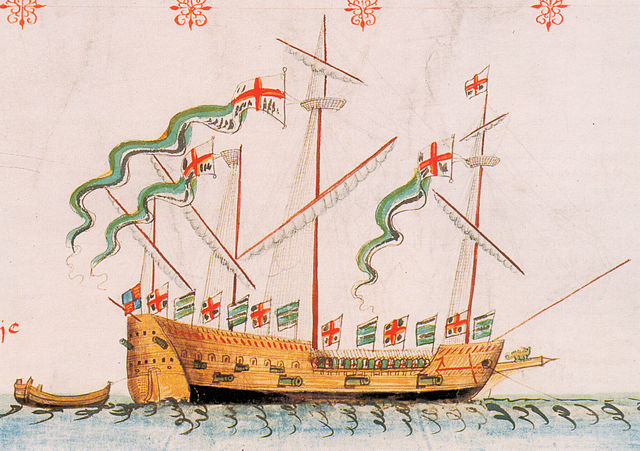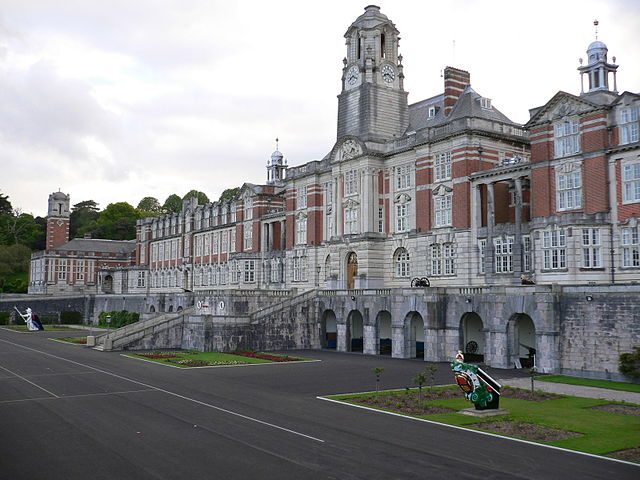The Royal Scots Navy was the navy of the Kingdom of Scotland from its origins in the Middle Ages until its merger with the Kingdom of England's Royal Navy per the Acts of Union 1707. There are mentions in Medieval records of fleets commanded by Scottish kings in the twelfth and thirteenth centuries. King Robert I developed naval power to counter the English in the Wars of Independence (1296–1328). The build-up of naval capacity continued after the establishment of Scottish independence. In the late fourteenth century, naval warfare with England was conducted largely by hired Scots, Flemish and French merchantmen and privateers. King James I took a greater interest in naval power, establishing a shipbuilding yard at Leith and probably creating the office of Lord High Admiral.
Andrew Wood's flagship, The Yellow Carvel, in action, from a children's history book (1906)
A model of the Great Michael, the largest ship in the world when launched in 1511
The captured Salamander, in the English Anthony Roll
A Scottish armed merchantman engaged in the Baltic trade is attacked by a Hanseatic ship. Detail from Carta marina, by Olaus Magnus.
The Royal Navy (RN) is the naval warfare force of the United Kingdom, British Overseas Territories and Crown Dependencies, and a component of His Majesty's Naval Service. Although warships were used by English and Scottish kings from the early medieval period, the first major maritime engagements were fought in the Hundred Years' War against France. The modern Royal Navy traces its origins to the early 16th century; the oldest of the UK's armed services, it is consequently known as the Senior Service.
A late 16th-century portrait of the Spanish Armada battling Royal Navy warships
HMS Victory, Nelson's flagship at Trafalgar, is still a commissioned Royal Navy ship, although she is now permanently kept in dry-dock.
HMS Warspite and Malaya, seen from Valiant at the Battle of Jutland
Britannia Royal Naval College in Dartmouth, Devon








